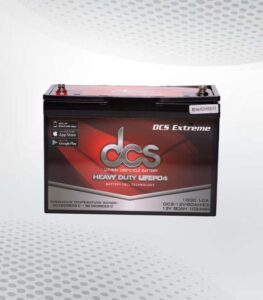Your Mitsubishi Outlander is built for adventure, but its performance can hinge on one crucial component: the starter motor. This small yet mighty device is pivotal in getting your vehicle up and running each day. Without it, your driving plans come to an abrupt halt.
Maintaining the starter motor is essential for ensuring that every journey begins smoothly. Whether navigating city streets or exploring rugged terrain, knowing how to care for this vital part can save you time and money. This guide covers everything from understanding its function to recognizing when it’s time for a replacement.
Let’s explore some practical tips for keeping your Starter Motor Mitsubishi Outlander in top shape!
Understanding The Starter Motor’s Function
The starter motor is your Mitsubishi Outlander’s unsung hero. It’s a crucial component that brings your vehicle to life each time you turn the key or push the start button. Without this device, all the power in your battery would be useless when you try to get on the road.
At its core, the starter motor converts electrical energy from the battery into mechanical energy. This transformation results in a powerful rotational force that cranks up your engine and gets it running smoothly. The moment you engage the ignition, this little powerhouse springs into action.
Once activated, it engages with a small gear called a pinion that meshes with another gear on your engine’s flywheel. This interaction allows for efficient movement and ensures consistent starting whenever needed. Once the engine starts running, the starter motor disengages automatically.
Wear can occur within this mechanism over time and with consistent use, leading to performance issues. Understanding how vital it is can help prioritize maintenance efforts before problems arise.
A well-functioning starter motor enhances reliability and overall vehicle efficiency, making routine checks essential for any proud Outlander owner eager for smooth adventures!
Regular Inspection and Maintenance
Regular inspection and maintenance of your Mitsubishi Outlander’s starter motor are essential for ensuring optimal performance. Making this a routine part of your vehicle care can prevent unexpected breakdowns.
Start by checking the starter motor periodically, especially if you notice any changes in starting behaviour. Look for signs like slow cranking or unusual noises when turning the key. These are early indicators that something may be amiss.
Monitor battery health since the starter motor relies heavily on it. A weak battery can strain the starter, leading to premature wear. Ensure your battery terminals are clean and secure to maintain efficient power flow.
Regular maintenance involves inspecting wiring and connections associated with the starter motor. Loose or corroded wires can disrupt performance and lead to total failure over time.
Consult your owner’s manual for specific recommendations regarding service intervals related to the starter motor. Following these guidelines helps keep this critical component functioning effectively throughout its lifespan.
Signs Of Wear and Tear
Every component of your Mitsubishi Outlander plays a crucial role, especially the starter motor. Noticing signs of wear and tear early can prevent unexpected breakdowns.
One common sign is unusual noises when starting your vehicle. If you hear grinding, clicking, or whirring sounds, it’s time to investigate further. These noises often indicate that the starter motor gears are damaged or misaligned.
Another red flag is slow engine cranking. If your Outlander takes longer than usual to start, this could mean that the starter motor isn’t functioning efficiently anymore. It might be struggling due to electrical issues or internal damage.
You should also pay attention to any dimming lights during startup. When the key is turned in the ignition, and you notice a drop in headlight brightness, this could signal that your starter motor isn’t drawing power effectively.
Frequent jump-starts may indicate a failing starter motor rather than battery issues. If you’ve found yourself relying on boost starts more often than before, examining your vehicle’s starter system closely for potential problems is essential.
Cleaning The Mitsubishi Outlander Starter Motor
Cleaning your Mitsubishi Outlander Starter Motor is essential for your Mitsubishi Outlander maintenance. Over time, dirt and grime can accumulate on the motor, affecting its performance. A clean starter ensures reliable operation when you need it most.
Before starting, ensure the engine is off and disconnected from any power source to avoid accidents. Safety first! Remove the starter motor carefully from its housing. This process may vary depending on your model year, so consult your owner’s manual if needed.
Once removed, inspect it closely for accumulation of dirt or oil residue. Use a soft brush or cloth to gently wipe away debris without damaging any components. Avoid using excessive force; delicate parts are easy to break.
For more stubborn grime, consider using a safe degreaser for automotive applications. Apply it sparingly and rinse with clean water afterwards—make sure everything dries completely before reinstalling the motor.
Regularly cleaning your starter enhances functionality and extends its lifespan. It’s a quick task that can save you larger repair bills while ensuring smooth starts every time you turn the key in your Mitsubishi Outlander.
Checking Electrical Connections
Checking the electrical connections of your starter motor is crucial for optimal performance. A secure and clean connection ensures that your Mitsubishi Outlander starts smoothly every time you turn the key. Loose or corroded connections can lead to intermittent starting issues, leaving you stranded.
Begin by visually inspecting the battery terminals. Ensure they are tightly secured and free from corrosion. Corrosion appears as a white, powdery substance around the terminals and can hinder electrical flow. If you notice any buildup, gently clean it off using a mixture of baking soda and water.
Next, trace the wires leading to the starter motor itself. Look for any signs of fraying or damage along these cables, which could cause poor connectivity. Replace any worn-out wires immediately to prevent further complications down the line.
Remember about grounding points as well; they play an important role in ensuring the proper function of your starter system. Make sure all ground connections are tight and rust-free.
Last but not least, consider using dielectric grease on connectors after cleaning them thoroughly. This will help protect against moisture build-up in future inspections while providing better conductivity for reliable operation.
Ensuring Proper Lubrication
Proper lubrication is vital for keeping the starter motor in your Mitsubishi Outlander functioning smoothly. The starter motor contains moving parts that require adequate lubrication to minimize friction and wear. When these components are well-lubricated, they operate more efficiently, leading to better performance.
Using the right lubricant is essential. Always consult your vehicle’s manual for recommendations on suitable oils or greases specific to the starter motor. Using inappropriate products can lead to buildup or deterioration of critical components, causing failure over time.
As part of your maintenance routine, regularly check the condition of the existing lubricant. If you notice any signs of thickening or contamination, it’s time to clean and reapply fresh lubricant. This will ensure optimal operation and longevity for your starter motor.
Apply a small amount of lubricant directly onto pivot points and gears within the starter assembly, where movement occurs most often. Avoid excessive application; too much grease can attract dust and debris that may cause further issues.
Keep an eye on how often you need to lubricate based on usage conditions—frequent short trips might require more regular checks compared to longer drives under stable conditions.
When To Replace the Outlander Starter Motor
A Outlander Starter Motor, as it initiates the engine’s operation. However, like all components, it has a lifespan and can wear out over time. Knowing when to replace it is crucial for maintaining optimal performance.
It might be time to consider a replacement if you notice unusual sounds when starting your vehicle—like grinding or clicking noises. These sounds often indicate that something inside the starter motor is failing or misaligning. Ignoring them could lead to more significant issues down the line.
Another sign involves intermittent starting problems. If your Outlander struggles to start occasionally but works fine at other times, it’s usually an indicator of an aging starter motor needing attention sooner rather than later.
Additionally, if you experience dim dashboard lights while attempting to start your vehicle, this may suggest that the starter isn’t drawing enough power from the battery due to internal failure. This symptom warrants further investigation.
Keep track of how many miles you’ve driven since installing your starter motor. Most starters last between 100,000 and 150,000 miles; however, those used in harsh conditions may wear out faster and require earlier replacement.
Preventive Maintenance Tips
Preventive maintenance is essential for keeping your Mitsubishi Outlander’s starter motor in top shape. One of the easiest ways to ensure longevity is through regular inspections. Schedule a check-up every six months or during routine service intervals. This helps catch potential issues before they escalate.
Always monitor your battery’s condition. A weak battery can strain the starter motor, leading to premature failure. Test it regularly and replace it if it shows signs of weakness, like slow cranking or dim lights.
Maintain clean electrical connections as well. Corrosion can build up over time, creating resistance that impacts performance. Inspect terminals and cables frequently, cleaning them with a wire brush when necessary.
Additionally, consider environmental factors that may affect your vehicle’s components. If you often drive in extreme temperatures or harsh conditions, more frequent checks might be necessary to ensure everything runs smoothly.
Don’t overlook the importance of using quality parts when repairs are needed. Choosing OEM replacement parts will help maintain compatibility and performance levels tailored specifically for your Mitsubishi Outlander.
Conclusion
Maintaining your Mitsubishi Outlander’s starter motor is essential for optimal performance and reliability. Regular care can prevent unexpected failures that disrupt your daily routine. A well-maintained starter motor contributes to a smooth engine start and extends the life of other electrical components.
Pay attention to signs of wear and tear. It might be time for an inspection if you notice sluggish starts or unusual noises. Being proactive about maintenance helps catch small issues before they escalate into costly repairs.
Cleaning the starter motor regularly ensures efficient operation. Dust, dirt, and grime can hinder its functionality over time, so include this task in your vehicle’s upkeep schedule.
Checking electrical connections is another critical aspect that shouldn’t be overlooked. Loose or corroded connections can lead to poor performance or complete failure of the starting system.
Taking these steps will enhance your driving experience while ensuring peace of mind with your Mitsubishi Outlander. By integrating simple preventive measures into your regular car care routine, you’ll enjoy both longevity and reliable performance from one of your vehicle’s most vital components—the starter motor.
FAQs
How often should I inspect my starter motor?
Regular inspections every six months or during routine maintenance checks can help identify issues early on. Always listen for unusual sounds when starting your vehicle; they could indicate a problem with the starter motor.
What are the most common signs of a failing starter motor?
Common signs include a clicking sound when turning the key, failure to start, and dimming lights while cranking. If you notice these symptoms, it’s wise to investigate promptly.
Can I clean my starter motor myself?
Yes, cleaning your starter motor is generally straightforward. However, to avoid electrical hazards, ensure you disconnect it from power before attempting any cleaning procedures.
What type of lubricant should be used on the starter motor?
Use high-temperature grease designed for automotive applications to ensure proper lubrication without risking damage from heat or friction.
| Related Business Listings |
| Contact Directory |
| Local Business Profiles |




